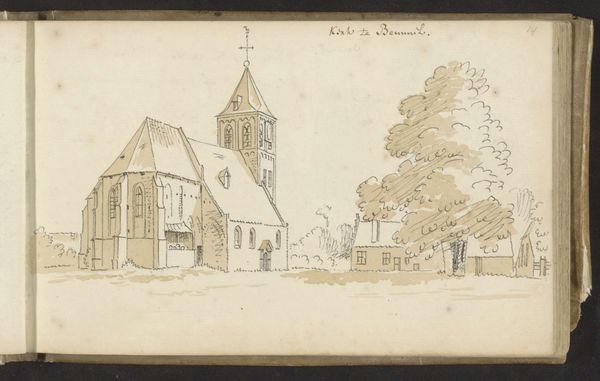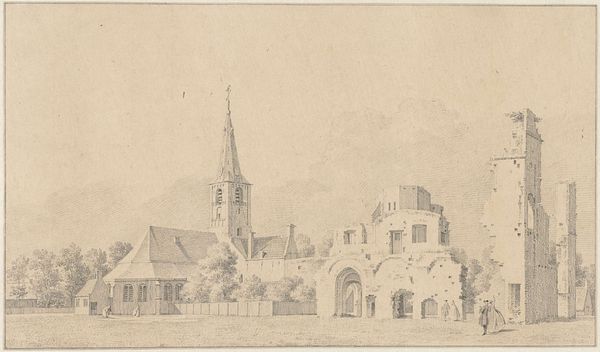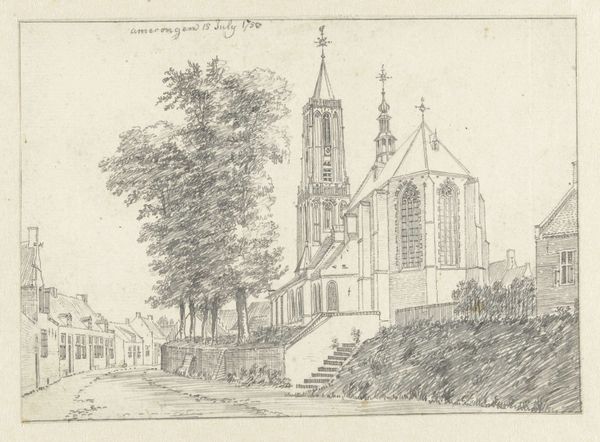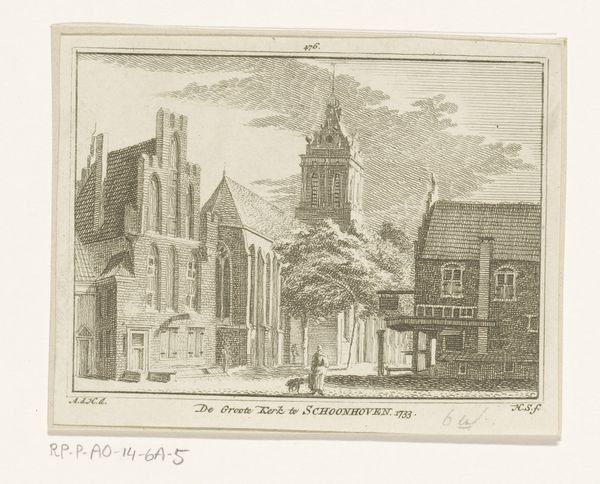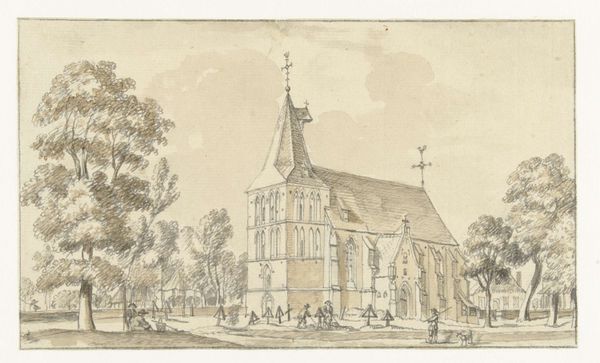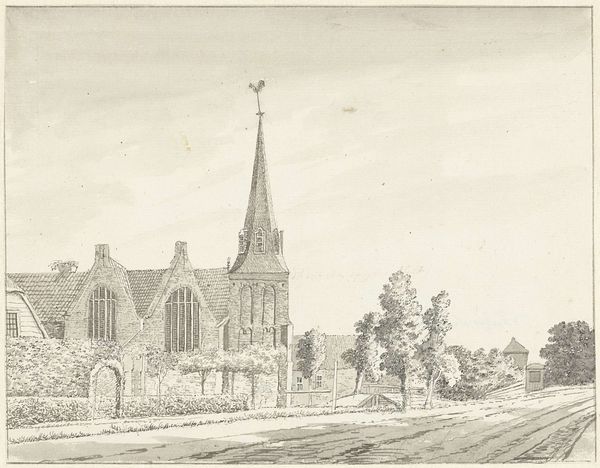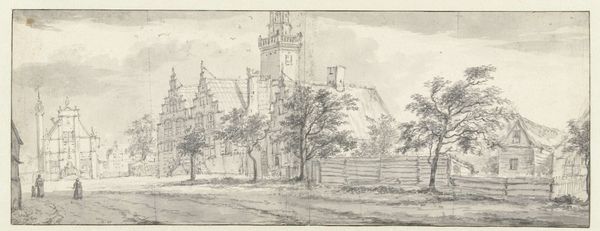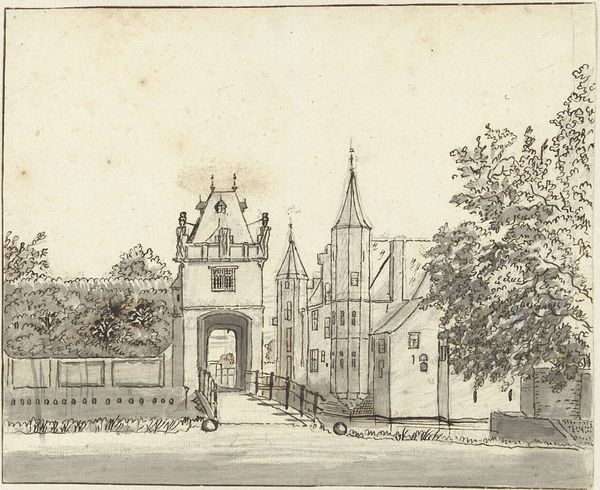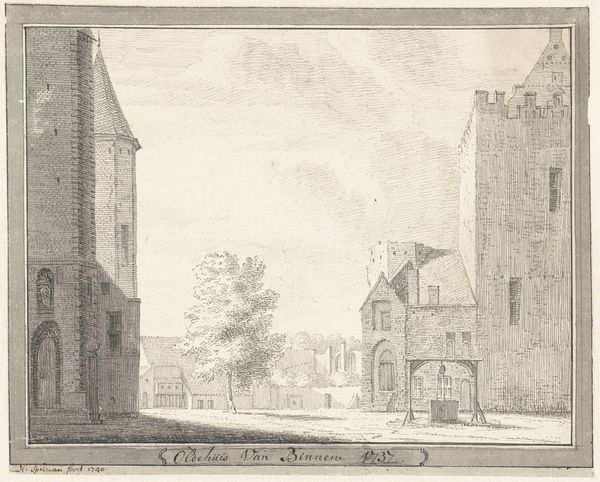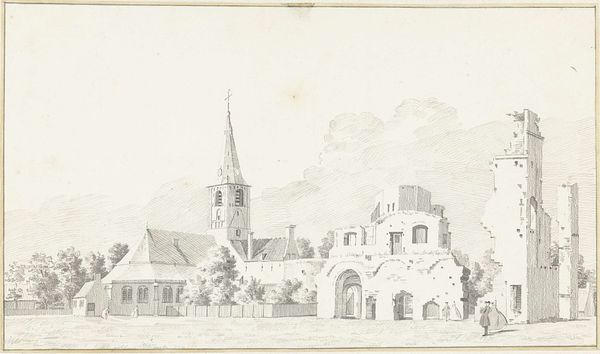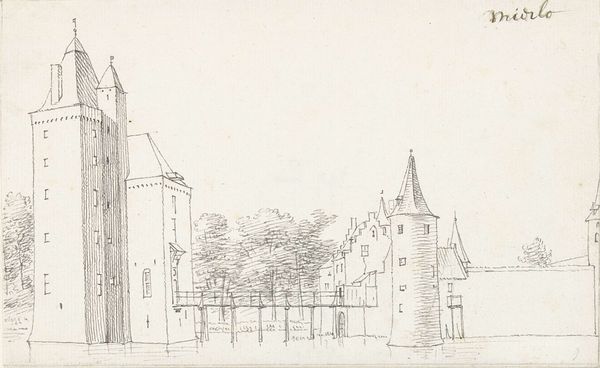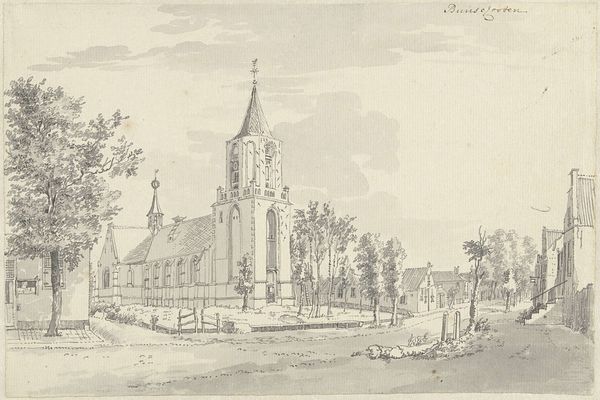
drawing, pen, architecture
#
architectural sketch
#
drawing
#
aged paper
#
quirky sketch
#
old engraving style
#
sketch book
#
landscape
#
classical-realism
#
personal sketchbook
#
sketchwork
#
sketchbook drawing
#
pen
#
cityscape
#
storyboard and sketchbook work
#
sketchbook art
#
architecture
Dimensions: height 162 mm, width 234 mm
Copyright: Rijks Museum: Open Domain
Editor: Here we have Jan de Beijer's "De Pieterskerk te Utrecht," likely from between 1752 and 1756, a pen drawing currently held at the Rijksmuseum. The use of line is quite striking, but it does leave me wondering—what kind of stories do you think this sketch can tell? Curator: Well, it speaks of resilience. Architectural drawings weren't just records; they were often imbued with aspirations. Churches like the Pieterskerk were symbols of faith, community, and permanence. Their images helped people connect across generations to their faith, so how did de Beijer depict that connection here? Editor: You can clearly see the church depicted on one side, with this vanishing perspective drawing you to another steeple, possibly of another important church, down the road. It is almost inviting a connection between the two? Curator: Precisely. Notice how the perspective leads the eye. The city is not just backdrop, but rather plays an integral part to its structure. What effect do you think that perspective has on the viewer? Editor: Maybe a sense of directionality and openness? That these symbols can reach to anyone anywhere. Curator: It could even imply pilgrimage. Drawings such as these captured not merely the image of stone, but the soul of a place. They speak of collective identity, a cultural memory preserved through visual representation. Look at how it is a part of a bigger neighborhood—maybe it is there to connect more than command? Editor: That is really interesting! So it is less about the individual structure, but how the community identifies with these enduring symbols in their lives. I'll certainly be pondering that. Curator: Exactly. Art becomes a vessel carrying meaning across time. Perhaps now you can appreciate its rich historical, cultural, and emotional significance!
Comments
No comments
Be the first to comment and join the conversation on the ultimate creative platform.
